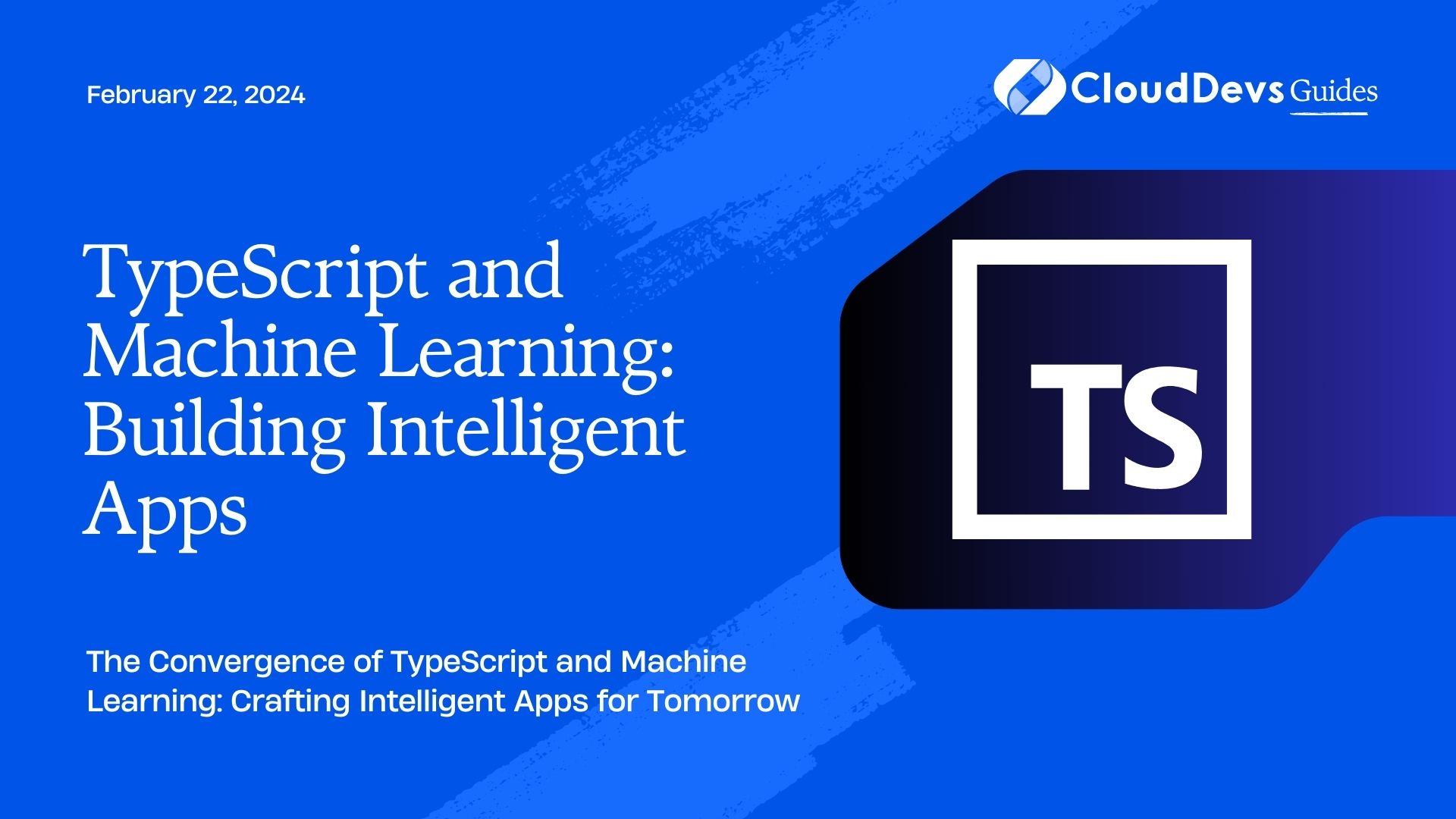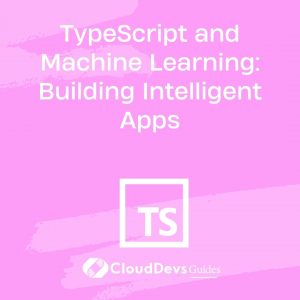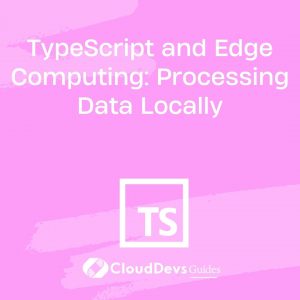TypeScript and Machine Learning: Building Intelligent Apps
In the rapidly evolving world of technology, building intelligent applications is no longer just a futuristic dream; it’s a practical reality. Thanks to the synergy between TypeScript and Machine Learning, developers can now harness the power of data-driven decision-making and create smarter, more capable applications. In this blog post, we’ll delve into the fascinating realm of TypeScript and Machine Learning, exploring how these two technologies combine to build intelligent apps.
Table of Contents
1. Understanding TypeScript and Machine Learning
1.1. What is TypeScript?
TypeScript is a statically typed programming language developed by Microsoft. It is a superset of JavaScript, which means that any valid JavaScript code is also valid TypeScript. However, TypeScript adds optional static typing to the language, making it more robust and maintainable for large-scale applications.
The key features of TypeScript include:
- Static Typing: TypeScript enforces strong typing, allowing developers to catch type-related errors at compile time rather than runtime.
- Type Inference: TypeScript’s compiler can often infer types without explicit annotations, making it less verbose than some other statically typed languages.
- Interfaces and Classes: TypeScript supports object-oriented programming with classes and interfaces, making it suitable for building complex software architectures.
1.2. What is Machine Learning?
Machine Learning is a subset of artificial intelligence (AI) that focuses on the development of algorithms and models that enable computers to learn from and make predictions or decisions based on data. ML algorithms can be categorized into supervised, unsupervised, and reinforcement learning, depending on the type of data and task they are designed for.
Machine Learning can be used for a wide range of tasks, including:
- Image and Speech Recognition: Identifying objects in images or transcribing spoken words.
- Natural Language Processing (NLP): Analyzing and generating human language text.
- Recommendation Systems: Providing personalized recommendations based on user behavior.
- Predictive Analytics: Forecasting future trends or outcomes based on historical data.
2. Why Combine TypeScript and Machine Learning?
2.1. Strong Typing for Data
One of the primary reasons to use TypeScript in conjunction with Machine Learning is its strong typing system. When working with large datasets and complex ML models, data integrity is crucial. TypeScript’s static typing helps catch data-related errors during development, reducing the likelihood of runtime issues caused by type mismatches.
Consider a scenario where you’re building a recommendation system for an e-commerce platform. You’ll be dealing with user data, product data, and user interactions. TypeScript ensures that the data you’re working with is consistent and correctly aligned with the model’s expectations.
2.2. Code Maintainability
As ML projects evolve, maintaining and extending the codebase becomes a significant concern. TypeScript’s maintainability benefits shine in these situations. With well-defined types and interfaces, developers can understand and modify code more easily, even if they didn’t write the original codebase.
Additionally, TypeScript’s tooling, such as autocompletion and refactoring support in modern code editors, accelerates development and reduces the likelihood of introducing bugs when making changes.
2.3. Cross-Platform Compatibility
Another advantage of TypeScript is its ability to transpile to JavaScript. This feature is particularly valuable when building cross-platform applications. Whether you’re targeting web browsers, mobile devices, or desktop applications, TypeScript can help you maintain a single codebase while ensuring compatibility across different platforms.
In the context of Machine Learning, this means that you can use TypeScript to build models and then deploy them across a variety of environments, from web apps to server-side applications.
3. Getting Started: Setting Up Your Development Environment
Before diving into the code, you’ll need to set up your development environment for TypeScript and Machine Learning. Here are the basic steps to get started:
3.1. Prerequisites
- Node.js: Ensure you have Node.js installed on your system. You can download it from the official website.
- TypeScript: Install TypeScript globally using npm (Node Package Manager) by running the following command:
shell npm install -g typescript
- Machine Learning Framework: Choose a machine learning framework or library for TypeScript. TensorFlow.js and Brain.js are popular options.
- Code Editor: Use a code editor with TypeScript support, such as Visual Studio Code or WebStorm.
3.2. Project Setup
Once you have the prerequisites in place, create a new directory for your project and initialize it as a Node.js project:
shell mkdir intelligent-app cd intelligent-app npm init -y
Now, install the necessary dependencies:
shell npm install typescript npm install @types/node npm install your-machine-learning-library
With your project set up, you’re ready to start building your intelligent app with TypeScript and Machine Learning.
4. Building a Simple Machine Learning Model in TypeScript
Let’s begin by creating a basic example of a Machine Learning model in TypeScript. In this example, we’ll build a simple linear regression model to predict the price of houses based on their size. We’ll use the TensorFlow.js library for this task.
4.1. Installing Dependencies
Install TensorFlow.js and its TypeScript typings:
shell npm install @tensorflow/tfjs npm install @types/tensorflow__tfjs
4.2. Data Preparation
For our model to learn, we need data. Create a CSV file named housing-data.csv with the following structure:
csv size,price 1400,245000 1600,312000 1700,279000
4.3. Model Training
Now, let’s create a TypeScript file, house-price-prediction.ts, and build our Machine Learning model:
typescript
import * as tf from '@tensorflow/tfjs-node';
async function trainModel() {
// Load the dataset
const dataset = tf.data.csv('file://path/to/housing-data.csv', { columnConfigs: { price: { isLabel: true } } });
// Prepare the data
const datasetSize = await dataset.size();
const shuffledDataset = dataset.shuffle(datasetSize);
// Split the data into training and testing sets
const trainSize = Math.floor(datasetSize * 0.8);
const testSize = datasetSize - trainSize;
const trainDataset = shuffledDataset.take(trainSize);
const testDataset = shuffledDataset.skip(trainSize);
// Define the model
const model = tf.sequential();
model.add(tf.layers.dense({ units: 1, inputShape: [1] }));
// Compile the model
model.compile({ optimizer: 'sgd', loss: 'meanSquaredError' });
// Train the model
await model.fitDataset(trainDataset, { epochs: 100, validationData: testDataset });
console.log('Training complete.');
// Make predictions
const size = tf.tensor([2000]);
const pricePrediction = model.predict(size);
pricePrediction.print();
}
trainModel();
In this code:
- We load the dataset from the CSV file and prepare it for training.
- We define a simple linear regression model with one input neuron.
- We compile the model with a stochastic gradient descent optimizer and mean squared error loss.
- We train the model using the training dataset and evaluate it with the test dataset.
4.4. Making Predictions
After training the model, we can use it to make predictions. In this case, we’re predicting the price of a house with a size of 2000 square feet.
5. Integrating Machine Learning into Real-World Applications
Now that we’ve built a basic Machine Learning model in TypeScript, let’s explore how ML can be integrated into real-world applications.
5.1. Recommender Systems
Recommender systems are widely used in e-commerce and content platforms to provide personalized recommendations to users. TypeScript’s strong typing and ML capabilities can be leveraged to build robust recommendation engines. By analyzing user behavior and preferences, these systems can suggest products, movies, or articles tailored to individual users.
5.2. Natural Language Processing
With TypeScript’s support for building web applications and Machine Learning libraries like TensorFlow.js, you can create sophisticated natural language processing (NLP) applications. NLP models can perform tasks such as sentiment analysis, text summarization, and chatbot development. TypeScript’s static typing and tooling can help ensure the reliability of NLP applications.
5.3. Image Recognition
Image recognition is a hot topic in computer vision. TypeScript can be used to build web-based applications that leverage Machine Learning models for image classification and object detection. This opens up possibilities in industries like healthcare (medical image analysis), autonomous vehicles, and e-commerce (visual search).
6. Challenges and Considerations
While TypeScript and Machine Learning offer powerful capabilities, there are challenges and considerations to keep in mind when building intelligent apps.
6.1. Data Privacy and Ethics
When working with user data, it’s essential to prioritize data privacy and ethical considerations. Ensure that your ML models and applications comply with data protection regulations and respect user consent.
6.2. Model Deployment
Deploying ML models in production environments can be complex. You’ll need to consider factors like model versioning, scalability, and monitoring to ensure the reliability of your intelligent app.
6.3. Performance Optimization
Machine Learning models can be resource-intensive, especially when dealing with large datasets. Optimizing the performance of your application, both in terms of speed and memory usage, is crucial for a seamless user experience.
7. Future Directions
As technology continues to advance, TypeScript and Machine Learning are likely to play even more significant roles in building intelligent applications. Here are a couple of future directions to keep an eye on:
7.1. TypeScript and Deep Learning
Deep Learning, a subset of Machine Learning, focuses on neural networks with multiple layers. TypeScript’s support for static typing and object-oriented programming can be beneficial in building and maintaining complex deep learning models.
7.2. The Role of WebAssembly
WebAssembly (Wasm) is a binary instruction format that enables high-performance execution of code in web browsers. Integrating WebAssembly with TypeScript and Machine Learning libraries could lead to faster and more efficient web-based intelligent applications.
Conclusion
In this blog post, we’ve explored the exciting intersection of TypeScript and Machine Learning. By combining the strong typing and development benefits of TypeScript with the data-driven capabilities of Machine Learning, developers can create intelligent applications that meet the demands of modern users.
From building simple ML models to integrating them into real-world applications like recommender systems, NLP, and image recognition, TypeScript provides a robust foundation for your intelligent app development journey.
As we look to the future, TypeScript and Machine Learning are poised to continue transforming the landscape of software development, enabling us to build smarter, more capable applications that enhance user experiences and solve complex problems.
So, whether you’re a seasoned developer or just starting your journey, embrace the power of TypeScript and Machine Learning, and start building the next generation of intelligent applications. Your journey to building intelligent apps has only just begun!
Table of Contents









